Opinion & Analysis
Focus on Fitness: What happens when an average golfer trains like a pro?
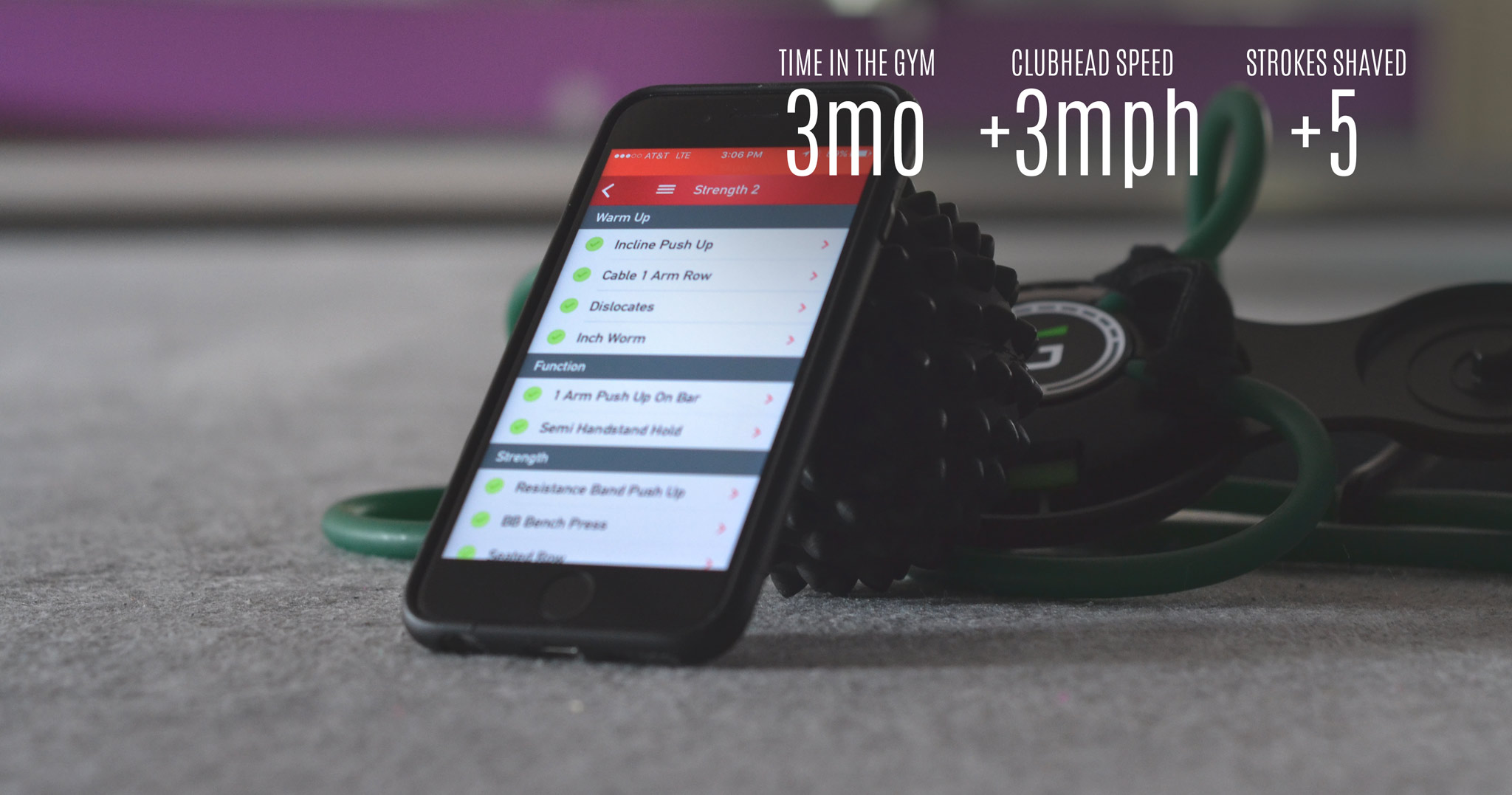
For many years, the words fitness and golf were rarely uttered in the same sentence. But now we can’t go through one commercial break without hearing how athletic golfers are and how everyone can benefit from a focus on fitness. Sure, if we all had a few hours each day to devote to the gym, we’d see an impact. But it got me thinking, can we quantify the impact a focus on proper fitness can play in the golf game of an amateur?
To help answer this question, I reached out to Nick Randall, a GolfWRX Featured Writer and Strength and Conditioning Coach to elite golfers such PGA Tour player Cameron Smith, who enthusiastically jumped on board to help guide me through this process. In addition to his professional clients, Nick offers virtual training to anyone just like what I went through.
The goal wasn’t to simply drop everything and act like a pro. I didn’t get to play golf for a living, and didn’t have the time they have to devote to the gym. The goal was to see if my golf game could improve by utilizing a tour-proven approach to fitness, guided by an elite-level trainer, but adjusted for the time and skill level of an amateur.
Nick was based in Australia at the time (he’s now in Jacksonville, FL), so all our interactions would be done remotely. As a technologist and app developer, this presented another opportunity to test the theory that technology is transforming the way we interact, even when it comes to something like fitness training.

Over the course of four months, Nick guided me through three training programs, a daily motor pattern and mobility program, and nutrition and hydration advice, all via his Golf Fit iOS app, email, and Skype video chats. Our objective was to train the body to rotate more efficiently. This would result in some changes to my swing action, but without the intention of directly manipulating the club face or ball flight. My only swing changes for four months would be a direct result of this training, with no outside input.
I also wanted to be as honest and transparent as possible, so good, bad or ugly, you’ll find links to my DEXA Scans, Trackman Combine results, and swing videos below.
Did it work?
If you are wondering if you should bother reading on, it definitely worked. Physically, I’m stronger and have less back pain every day including after golf rounds or practice. On the course, my misses are tighter, my focus is stronger, and my endurance is better. We’ll cover all of this in detail, but Nick and this experience have fundamentally changed my approach to fitness in my everyday life, as well as my golfing life.
Baseline Evaluation
Any new fitness program must start with an evaluation. There are many ways to evaluate someone and ideally, this would be done in person. With Nick in Australia, we couldn’t do the assessment in person, so we spent a lot of time talking via Skype and I answered a detailed questionnaire. I’ve had back issues in the past, and one of the primary goals of the program was to strengthen that area to reduce daily pain, as well as pain associated with golfing. I have had medical assessments done on my back and passed along my charts to Nick for review.
I also sent Nick videos of my current swing, and we used my initial Trackman Combine videos as well during the evaluation phase.
DEXA Scan
In addition to the written assessment and discussions, I got a DEXA Scan so we could see where I might have imbalances or other trouble areas. A DEXA Scan is a full body scan that measures body composition including total body fat, breaking down bone mass, fat tissue, and lean muscle mass in the body.
To get the scan, I worked with Peter Fisher, the co-owner of DexaFit Atlanta. Let me just say, wow, that was eye-opening. The short, 10-minute scan produced images and reports that laid out how much body fat and lean muscle mass I have. I have too much body fat and that black and white image above was not pretty to see.
We took a look at the reports and decided if I focused on better nutrition, in addition to strength gains, I should be able to take my body fat percentage down to 25 percent (from 32.2 percent). It was a very aggressive goal, but a motivator as well.
Initial Trackman Combine
While we were not planning to make any direct swing changes, such as worrying about my inside takeaway, we did want to get a baseline of my current swing. The best way to do that is with a Trackman Combine, so I headed out to BridgeMill Golf Academy and worked with Tom Losinger, Director of Golf Instruction, who ran me through the combine.
The Trackman Combine is a standardized test that identifies strengths and weaknesses in the golf swing by scoring 60 shots from various yardages. If you haven’t had a chance to take the combine, I highly recommend it.
You can view the full Combine report as well as videos associated with some of my swings, by heading to this site I created.
Overall, I was happy with the results. The Combine was performed on a warm day with very little wind. My score was 69.2. I had 14 shots over 90 points. My max club speed with the driver was 104.8 mph and my longest drive was 278.8 yards.
Nick and I analyzed these results to find areas of weakness that could be attributed to poor body performance. The Combine swing scores are all about distance from the target. While dispersion can be driven by poor swing mechanics, it also is directly related to stability in the golf swing. We identified issues with my turn and posture from the videos and marked my max driver speed down as a baseline for any speed increases I might see.
The Fitness Program
Our fitness plan was broken up into three 1-month long programs. Each week included six days of routines: three strength days and three mobility and movement pattern days. That meant six days a week I was training my body with strength, mobility and movement pattern drills.
To track the progress, we used the Golf Fit iOS App, which Nick created for use with his athletes. Golf Fit is laid out to make it very easy to view your program, which includes photos and descriptions of the exercises, and complete your reps and sets.
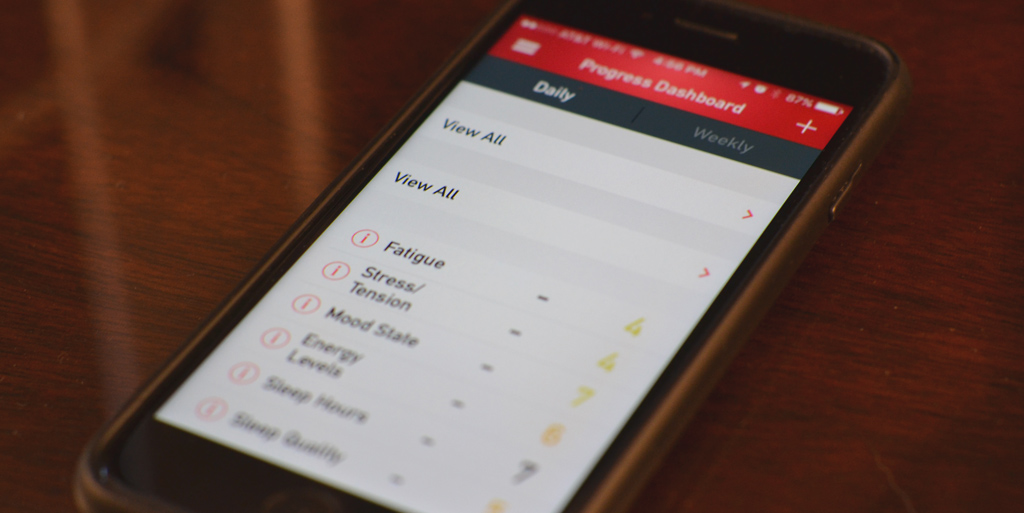
Month 1 was a primer month. It introduced me to some new exercises and eased me into my strength program. Month 2 switched up the exercises and ramped up the intensity. It also added some cardio to the warm up.
Month 3 was the hardest program and the one I found most interesting. It added more dynamic, golf specific exercises such as the Sidestepper with Band. I felt like I was able to better connect the exercise with how they would help my game. The Sidestepper, for example, was designed to activate the glutes and promote lateral stability, something very important during the golf swing.
In addition to the training programs, my favorite part of the Golf Fit app is the progress tracker. Most apps let you track your food or water intake and even how you feel, but they are cumbersome. With Golf Fit, you can easily score your progress, which brilliantly uses your averages as a default option. This made it very easy to track my progress every night.
I had many times over the course of the program, like when we had family in town over the holidays, where I wanted to do almost anything except my workout or nightly program. Everyone would be sitting in the living room, laughing and having a great time, and I’d be standing at the back of the room, Thoracic Pro strapped on, turning back and through over and over. But it felt great when I finished, especially on days like those.
I ended the program strong and even though our research for this story is technically over, my workouts continue. You can view my Month 1 program here and the free Golf Fit iOS app includes photos and explanations of each exercise

Essential Gear and My Spiky Ball Addiction
I bought two pieces of equipment — a Spiky Ball and the Thoracic Pro — to assist with my exercises, but you don’t have to. You can pick up some fitness bands at your local sporting goods store and be good to go.
I’m in love with my spiky ball. It’s this perfect little ball with raised rubber spikes you can roll anywhere you need to relieve tightness or discomfort. I used it every night to massage my lower back, legs and even chest and arms. Because it is smaller than a foam roller, you can get it into very specific problem areas. If you roll it around a sore spot, you’ll be amazed how loose that area becomes.
I also purchased a Thoracic Pro. My posture and scapula control wasn’t as good as it could be. The Thoracic Pro is a harness you slip over your shoulders and when you properly engage your shoulder blades, a spiky ball in the middle of your back as well as two points on your shoulders, gives you feedback you’re in the right position. All I had to do was pull my shoulder blades back and slightly down. By doing this, I had pre-engaged my shoulder blades. My posture looked shockingly better and my turn was instantly tighter with less moving pieces. Every day for the next few months, I used my Thoracic Pro during the movement and motor pattern routine, and now I feel like it is second nature. I even took it to the range and hit balls with it on, which had a huge impact.
Movement Patterns and Nightly Routine
In order to make any meaningful change in my motor patterns, including the way I turn back and through the ball, I needed a nightly routine. Nick broke this into two programs, one for days where I was training and one for off days. They consisted of a mix of motor patterns with the Thoracic Pro as well as stretching and massage with the Spiky Ball.
These routines quickly became something I really looked forward to every night. It would take about 30 minutes to complete the motor patterns and stretching, and I enjoyed every minute. I got some funny looks from my wife as I was rigged up to the Thoracic Pro, turning and stomping behind her, but it really did work. I cannot guarantee I’ll continue my fitness programs with as laser-like a focus, but I definitely will continue my motor pattern and mobility work every night.
The motor pattern work consisted of the following routine:
Nutrition and Hydration
Nick also offered basic nutrition advice, and he started by getting me to understand the majority of weight loss, which is something many of us want, is driven by nutrition. So eating cleaner became a goal. The Golf Fit app was a huge motivator to eating well and staying hydrated. Each night, the app asked me to score how I did on a scale of 1-10, ten being perfectly clean eating. I never did score a 10, but had quite a few nines. My average was 7-8, which as someone who works long hours and travels, is a comfortable way to start eating healthier.
For this story, the main takeaway is on-course eating. I’m amazed at how little my playing partners eat during a round. I used to only eat one protein bar around the turn. Nick’s recommendation was to take at least two snacks on the course and eat one mid-way through the front and back nines. For his players, he likes the Vega Sport Protein Bar or Macro Protein Bars, although there are others on the market. Adding an extra protein bar to my round made a big difference in my energy level. Below you can see what I typically have in the bag during a round.
I also started keeping a bag of honey glazed almonds with me. I’m not sure Nick would love that I took a perfectly healthy almond and covered it in sugar, but it is a delicious snack packed with protein and healthy fats. And I noticed when I offered my playing partners a protein bar or almonds, almost all of them took the almonds.
As for hydration, I’m convinced the majority of golfers don’t drink enough water, myself included. Why? Because it’s really hard to be fully-hydrated. Based on Golf Fit’s recommendation for my body weight, I need to drink about 110 ounces of water a day (or 7 standard bottles) to be well hydrated. On the course, I tried to drink one bottle every three holes, and I would put a Nuun electrolyte hydration tablet in one of the bottles on each nine holes. I also downloaded a Water App to track my intake through the day which notified me with a reminder to drink every 1.5 hours. You will have to try it for yourself, but when I was fully hydrated I truly felt stronger and less fatigued, which dehydration can cause.
Shots like this awkward sidehill fairway bunker shot (pictured below), where stability and focus are so critical to executing the shot, was where I really noticed the training, and on-course hydration and nutrition pay off.

Before and After a Round or Range Session
Pro golfers don’t just show up on the range or the first tee without warming up, so Nick recommended I perform one round of my Motor and Movement Patterns routine before practicing or playing.
One round of the routine takes about 10 minutes, and I noticed a difference when I completed the routine before hitting the range. I didn’t feel like I needed to hit as many short wedges to fire up the body. This helped on mornings where I was first off the tee and the range was barely open. I could roll a few putts and tee off knowing I had already made about 20-30 full turns warming up the main muscles I would need.
I completed the same routine as a warm-down after a round or practice session. Try the following routine from Nick, before you head to the first tee.
Checking in with Nick
Throughout the program, Nick was checking in with me regularly, providing that extra motivation I needed. I was also sharing videos with him like the one below from early in our training program. These check in videos were especially helpful at times when I wasn’t seeing the same on-course progress as I was seeing during practice.
What Can You Do If You Can’t Go All-In?
I went “all in” over the past four months, but I recognize that isn’t for everyone. I’ve talked about this program to avid golf friends of mine and they are intrigued, but likely won’t devote the time I have.
With that in mind, Nick put together a routine anyone can do that will have a positive impact on your game. Click here to download a PDF of the routine.
The Final DEXA Scan
Once I had completed the last of the workouts, it was time to get a follow-up DEXA scan, so I went back to DexaFit Atlanta and worked with Peter Fisher.
We were hoping to see a decrease in body fat percentage and a small increase in lean muscle mass, and I was nervous about how the scan would go. I could tell I had lost weight and was getting stronger, but let’s be honest, if I said I was working out for three months and then got a body scan that shows no weight loss, you probably wouldn’t believe I had actually been in the gym.
I didn’t want that to happen, so I was happy to see I had decreased my body fat by 3 percent (-8.4 actual pounds of fat). Again, if you want to see the raw data, you can view the full results here.
I was initially disappointed by the loss of lean mass. It seemed counterintuitive, because I had been training more, but after talking with Nick it became more clear. I was eating cleaner, and likely taking in less calories despite trying to focus on eating more and better proteins. Our strength program wasn’t about big muscle gains, and we also only had three months. He was happy to see I essentially held onto the muscle mass, while decreasing my body fat. What I also found interesting is that I shed pounds without spending much time doing cardio. Sure, cardio is important, but it showcases the positives of better eating decisions, and what effect they can have on your health.
The Final Combine
I went into the final Combine with a healthy combination of nervousness and confidence. Almost every day for four months, I had focused on modifying my motor patterns or strengthening my body with the specific goal of improving my game. I was seeing improvement on the course, so one test on one day wouldn’t define all the work Nick and I had done. But I wanted to see results in plain, clear data. I headed back to BridgeMill Golf Academy and worked with Tom Losinger again.
We were hoping to see more clubhead speed with the driver and better dispersion overall, driven by a more stable lower body and more solid turn back and through the ball. In plain, clear, data, I saw the results I was hoping for.
I had more shots closer to the pin, more shots scored above 90, more “perfect” shots, and 3 mph more max clubhead speed with the driver. Below are some high-level stats comparing the two Combines. You can view the full report and videos here.
I left the Combine on a high. All the effort looked to be paying off… but we don’t play golf by hitting 60 shots during some test. My year-end trip to Florida, where I would play at least 5 rounds, would be the ultimate test.
Florida Trip and My Golf Game Now
I’ve been going to Florida for a week of golf and vacation every year for the last six or so years. I play at least five rounds during the week and look forward to it all year. I brought my spiky ball and Thoracic Pro with me so I could continue my mobility and motor pattern routines.
Just like the Combine, I was nervous and excited to hit the first tee. It wasn’t a testing bay anymore; it was the first tee on a real course after fully-dedicating myself to this program and plan the last few months. I “needed” to see a meaningful difference in my game.
After my first round, I knew something positive was happening. I was hitting more greens, splitting more fairways, and keeping myself out of trouble. I’ve never been more consistent or had as much control over my swing as I did over the five rounds during the trip. Not only did I lower my handicap and post my cleanest card on a front-9 (1-under), but I didn’t wake up midway through the trip with lower-back pain.
Here is a comparison of five rounds prior to starting this program, five rounds from last year’s trip and my five rounds during my trip this year.
Final Thoughts
A focus on fitness can improve the game of amateurs. Whether you go all-in or take it slow, you can see results. To help get started, you can follow the mini-programs laid out in this story, and there are trainers like Nick all across the country ready when you are.
I won’t say the past four months have been easy. But they also haven’t been hard. Eating healthier, drinking more water, and sticking to my fitness and mobility routines have become a part of my day-to-day life. I can only continue to improve from here, and the longer I focus on fitness, the more likely I am to be able to play this great game for many years to come.
Opinion & Analysis
The 2 primary challenges golf equipment companies face

As the editor-in-chief of this website and an observer of the GolfWRX forums and other online golf equipment discourse for over a decade, I’m pretty well attuned to the grunts and grumbles of a significant portion of the golf equipment purchasing spectrum. And before you accuse me of lording above all in some digital ivory tower, I’d like to offer that I worked at golf courses (public and private) for years prior to picking up my pen, so I’m well-versed in the non-degenerate golf equipment consumers out there. I touched (green)grass (retail)!
Complaints about the ills of and related to the OEMs usually follow some version of: Product cycles are too short for real innovation, tour equipment isn’t the same as retail (which is largely not true, by the way), too much is invested in marketing and not enough in R&D, top staffer X hasn’t even put the new driver in play, so it’s obviously not superior to the previous generation, prices are too high, and on and on.
Without digging into the merits of any of these claims, which I believe are mostly red herrings, I’d like to bring into view of our rangefinder what I believe to be the two primary difficulties golf equipment companies face.
One: As Terry Koehler, back when he was the CEO of Ben Hogan, told me at the time of the Ft Worth irons launch, if you can’t regularly hit the golf ball in a coin-sized area in the middle of the face, there’s not a ton that iron technology can do for you. Now, this is less true now with respect to irons than when he said it, and is less and less true by degrees as the clubs get larger (utilities, fairways, hybrids, drivers), but there remains a great deal of golf equipment truth in that statement. Think about it — which is to say, in TL;DR fashion, get lessons from a qualified instructor who will teach you about the fundamentals of repeatable impact and how the golf swing works, not just offer band-aid fixes. If you can’t repeatably deliver the golf club to the golf ball in something resembling the manner it was designed for, how can you expect to be getting the most out of the club — put another way, the maximum value from your investment?
Similarly, game improvement equipment can only improve your game if you game it. In other words, get fit for the clubs you ought to be playing rather than filling the bag with the ones you wish you could hit or used to be able to hit. Of course, don’t do this if you don’t care about performance and just want to hit a forged blade while playing off an 18 handicap. That’s absolutely fine. There were plenty of members in clubs back in the day playing Hogan Apex or Mizuno MP-32 irons who had no business doing so from a ballstriking standpoint, but they enjoyed their look, feel, and complementary qualities to their Gatsby hats and cashmere sweaters. Do what brings you a measure of joy in this maddening game.
Now, the second issue. This is not a plea for non-conforming equipment; rather, it is a statement of fact. USGA/R&A limits on every facet of golf equipment are detrimental to golf equipment manufacturers. Sure, you know this, but do you think about it as it applies to almost every element of equipment? A 500cc driver would be inherently more forgiving than a 460cc, as one with a COR measurement in excess of 0.83. 50-inch shafts. Box grooves. And on and on.
Would fewer regulations be objectively bad for the game? Would this erode its soul? Fortunately, that’s beside the point of this exercise, which is merely to point out the facts. The fact, in this case, is that equipment restrictions and regulations are the slaughterbench of an abundance of innovation in the golf equipment space. Is this for the best? Well, now I’ve asked the question twice and might as well give a partial response, I guess my answer to that would be, “It depends on what type of golf you’re playing and who you’re playing it with.”
For my part, I don’t mind embarrassing myself with vintage blades and persimmons chasing after the quasi-spiritual elevation of a well-struck shot, but that’s just me. Plenty of folks don’t give a damn if their grooves are conforming. Plenty of folks think the folks in Liberty Corner ought to add a prison to the museum for such offences. And those are just a few of the considerations for the amateur game — which doesn’t get inside the gallery ropes of the pro game…
Different strokes in the game of golf, in my humble opinion.
Anyway, I believe equipment company engineers are genuinely trying to build better equipment year over year. The marketing departments are trying to find ways to make this equipment appeal to the broadest segment of the golf market possible. All of this against (1) the backdrop of — at least for now — firm product cycles. And golfers who, with their ~15 average handicap (men), for the most part, are not striping the golf ball like Tiger in his prime and seem to have less and less time year over year to practice and improve. (2) Regulations that massively restrict what they’re able to do…
That’s the landscape as I see it and the real headwinds for golf equipment companies. No doubt, there’s more I haven’t considered, but I think the previous is a better — and better faith — point of departure when formulating any serious commentary on the golf equipment world than some of the more cynical and conspiratorial takes I hear.
Agree? Disagree? Think I’m worthy of an Adam Hadwin-esque security guard tackle? Let me know in the comments.
@golfoncbs The infamous Adam Hadwin tackle ? #golf #fyp #canada #pgatour #adamhadwin ? Ghibli-style nostalgic waltz – MaSssuguMusic
Podcasts
Fore Love of Golf: Introducing a new club concept

Episode #16 brings us Cliff McKinney. Cliff is the founder of Old Charlie Golf Club, a new club, and concept, to be built in the Florida panhandle. The model is quite interesting and aims to make great, private golf more affordable. We hope you enjoy the show!
Opinion & Analysis
On Scottie Scheffler wondering ‘What’s the point of winning?’

Last week, I came across a reel from BBC Sport on Instagram featuring Scottie Scheffler speaking to the media ahead of The Open at Royal Portrush. In it, he shared that he often wonders what the point is of wanting to win tournaments so badly — especially when he knows, deep down, that it doesn’t lead to a truly fulfilling life.
View this post on Instagram
“Is it great to be able to win tournaments and to accomplish the things I have in the game of golf? Yeah, it brings tears to my eyes just to think about it because I’ve literally worked my entire life to be good at this sport,” Scheffler said. “To have that kind of sense of accomplishment, I think, is a pretty cool feeling. To get to live out your dreams is very special, but at the end of the day, I’m not out here to inspire the next generation of golfers. I’m not out here to inspire someone to be the best player in the world, because what’s the point?”
Ironically — or perhaps perfectly — he went on to win the claret jug.
That question — what’s the point of winning? — cuts straight to the heart of the human journey.
As someone who’s spent over two decades in the trenches of professional golf, and in deep study of the mental, emotional, and spiritual dimensions of the game, I see Scottie’s inner conflict as a sign of soul evolution in motion.
I came to golf late. I wasn’t a junior standout or college All-American. At 27, I left a steady corporate job to see if I could be on the PGA Tour starting as a 14-handicap, average-length hitter. Over the years, my journey has been defined less by trophies and more by the relentless effort to navigate the deeply inequitable and gated system of professional golf — an effort that ultimately turned inward and helped me evolve as both a golfer and a person.
One perspective that helped me make sense of this inner dissonance around competition and our culture’s tendency to overvalue winning is the idea of soul evolution.
The University of Virginia’s Division of Perceptual Studies has done extensive research on reincarnation, and Netflix’s Surviving Death (Episode 6) explores the topic, too. Whether you take it literally or metaphorically, the idea that we’re on a long arc of growth — from beginner to sage elder — offers a profound perspective.
If you accept the premise literally, then terms like “young soul” and “old soul” start to hold meaning. However, even if we set the word “soul” aside, it’s easy to see that different levels of life experience produce different worldviews.
Newer souls — or people in earlier stages of their development — may be curious and kind but still lack discernment or depth. There is a naivety, and they don’t yet question as deeply, tending to see things in black and white, partly because certainty feels safer than confronting the unknown.
As we gain more experience, we begin to experiment. We test limits. We chase extreme external goals — sometimes at the expense of health, relationships, or inner peace — still operating from hunger, ambition, and the fragility of the ego.
It’s a necessary stage, but often a turbulent and unfulfilling one.
David Duval fell off the map after reaching World No. 1. Bubba Watson had his own “Is this it?” moment with his caddie, Ted Scott, after winning the Masters.
In Aaron Rodgers: Enigma, reflecting on his 2011 Super Bowl win, Rodgers said:
“Now I’ve accomplished the only thing that I really, really wanted to do in my life. Now what? I was like, ‘Did I aim at the wrong thing? Did I spend too much time thinking about stuff that ultimately doesn’t give you true happiness?’”
Jim Carrey once said, “I think everybody should get rich and famous and do everything they ever dreamed of so they can see that it’s not the answer.”
Eventually, though, something shifts.
We begin to see in shades of gray. Winning, dominating, accumulating—these pursuits lose their shine. The rewards feel more fleeting. Living in a constant state of fight-or-flight makes us feel alive, yes, but not happy and joyful.
Compassion begins to replace ambition. Love, presence, and gratitude become more fulfilling than status, profits, or trophies. We crave balance over burnout. Collaboration over competition. Meaning over metrics.
Interestingly, if we zoom out, we can apply this same model to nations and cultures. Countries, like people, have a collective “soul stage” made up of the individuals within them.
Take the United States, for example. I’d place it as a mid-level soul: highly competitive and deeply driven, but still learning emotional maturity. Still uncomfortable with nuance. Still believing that more is always better. Despite its global wins, the U.S. currently ranks just 23rd in happiness (as of 2025). You might liken it to a gifted teenager—bold, eager, and ambitious, but angsty and still figuring out how to live well and in balance. As much as a parent wants to protect their child, sometimes the child has to make their own mistakes to truly grow.
So when Scottie Scheffler wonders what the point of winning is, I don’t see someone losing strength.
I see someone evolving.
He’s beginning to look beyond the leaderboard. Beyond metrics of success that carry a lower vibration. And yet, in a poetic twist, Scheffler did go on to win The Open. But that only reinforces the point: even at the pinnacle, the question remains. And if more of us in the golf and sports world — and in U.S. culture at large — started asking similar questions, we might discover that the more meaningful trophy isn’t about accumulating or beating others at all costs.
It’s about awakening and evolving to something more than winning could ever promise.





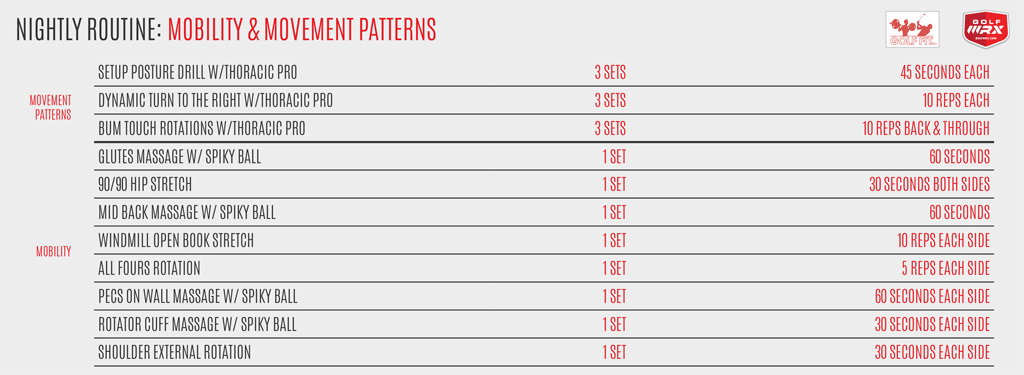






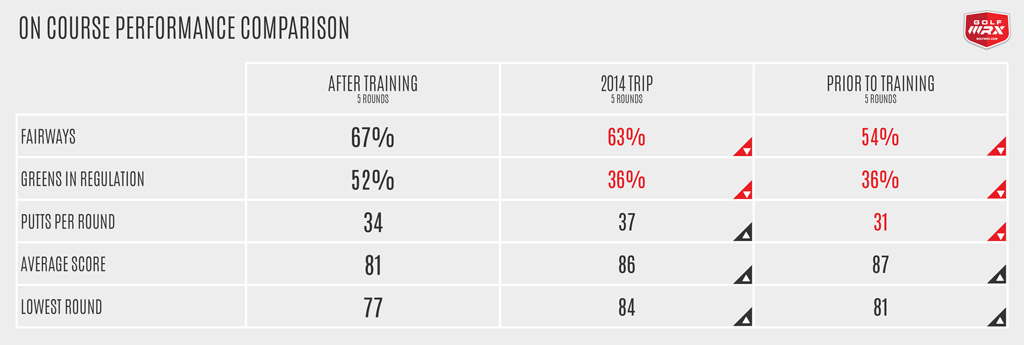

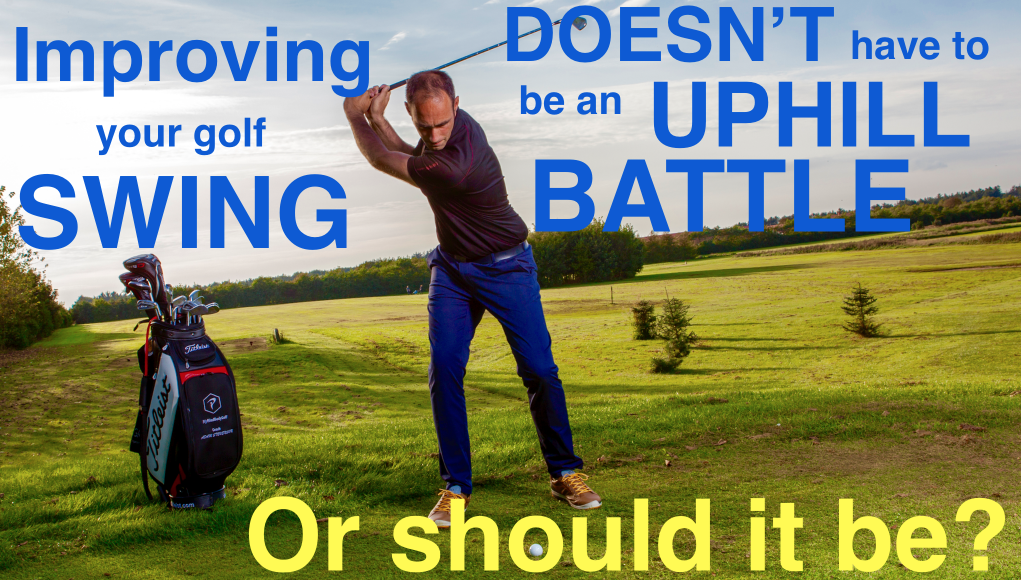
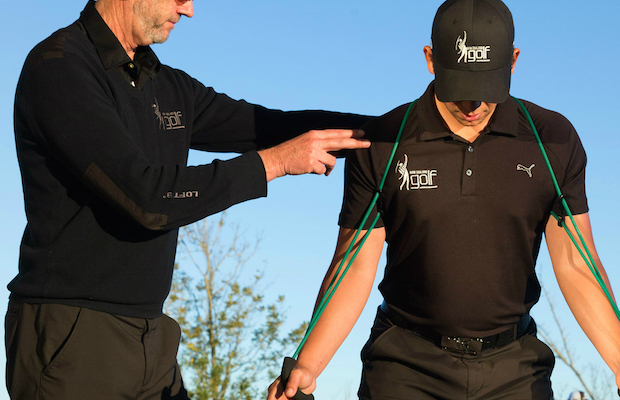
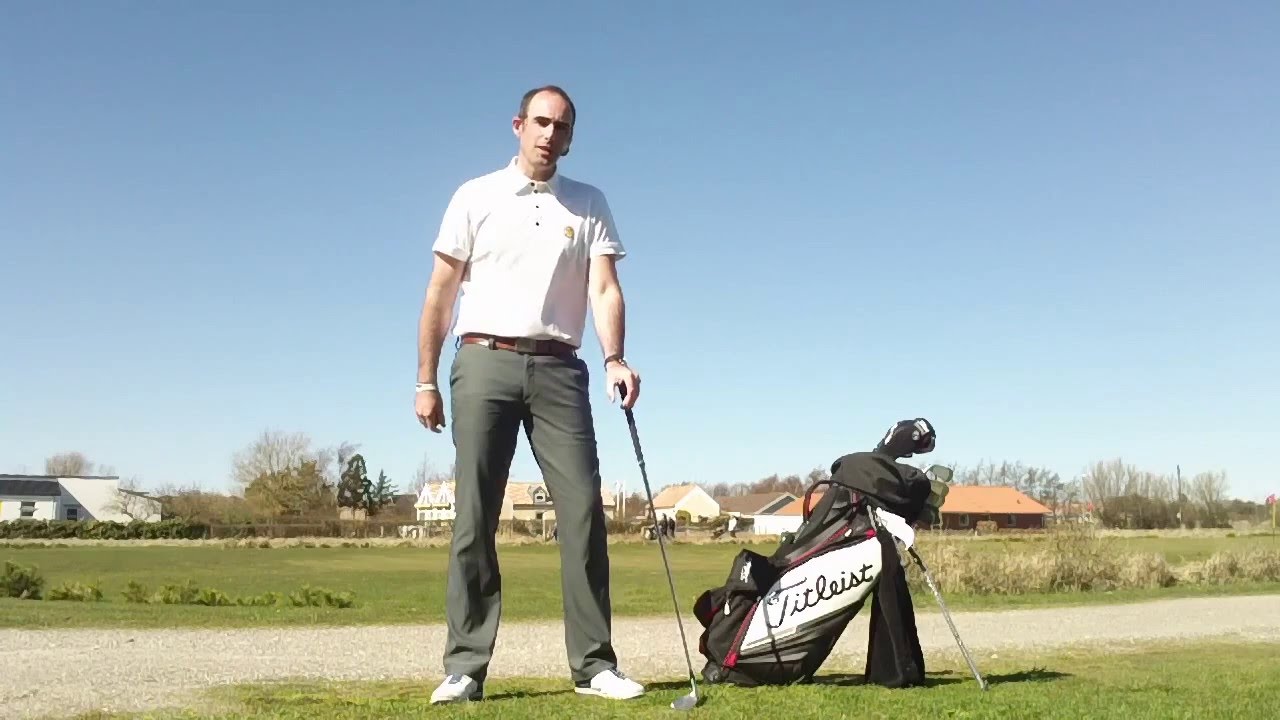
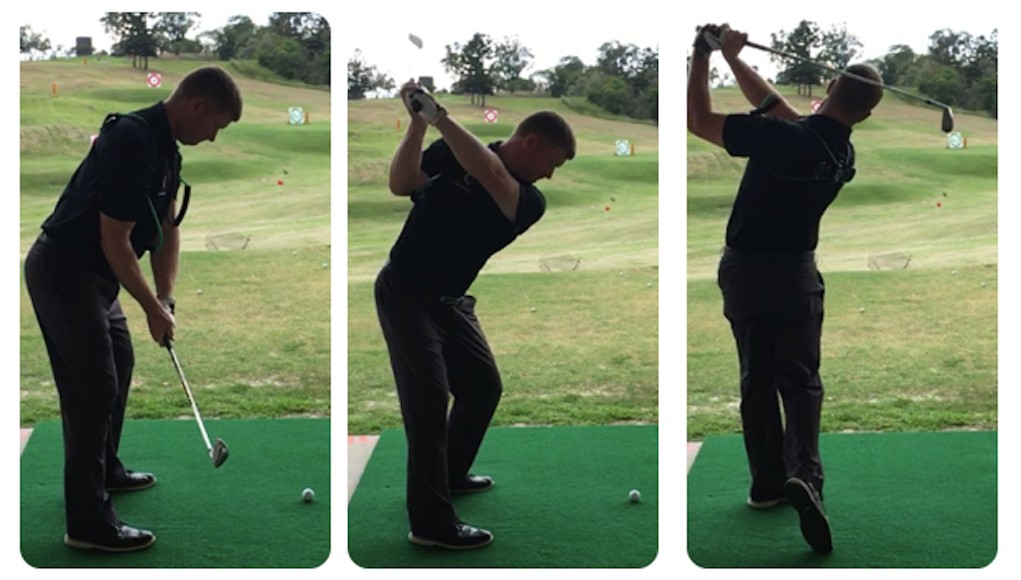
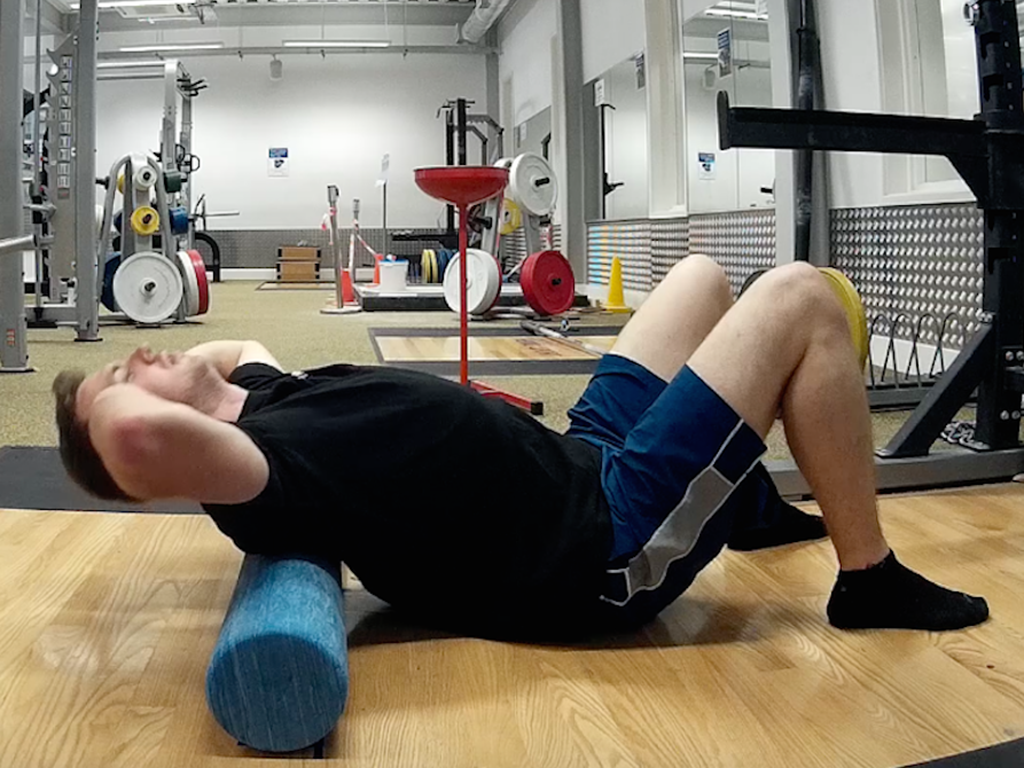
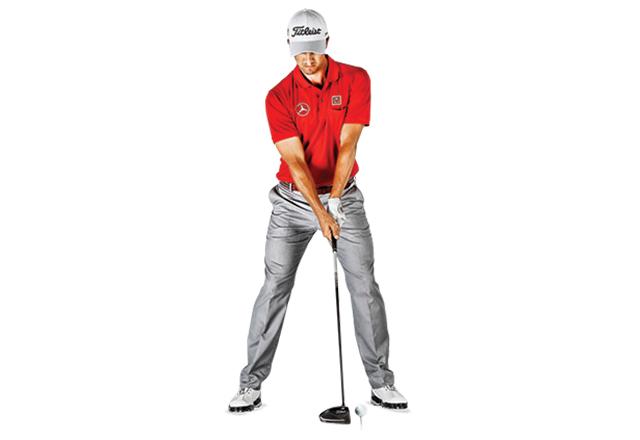








Scott
Jun 2, 2016 at 4:46 pm
Thanks for the article Kane. My biggest thought through this article was how are you a 10 handicap? You have a good swing and more than enough club head speed. Anyway, appreciate the time you put into this to help motivate me to improve my golf conditioning and game.
Nathan
Apr 19, 2016 at 2:37 pm
Good article! I am glad that the topic of fitness is catching on in our sport. However, I am very leary of Advocare products, particularly Spark, due to potentially harmful ingredients. So I would recommend closer inspection into that aspect of this article. Otherwise, keep it up!
Kane Cochran
Apr 19, 2016 at 3:28 pm
Thanks for your comments, Nathan! Spark is something I have had in my bag since prior to working with Nick (replacing coffee on early morning rounds and giving me a more flavorful way to drink 24oz of water early in the day). It was not part of this program or his nutrition advice. While I did research the product prior to starting to drink it, I’ll take another look, especially at their use of artificial ingredients like the sweeteners. Thanks for sharing your thoughts.
AC
Apr 18, 2016 at 8:26 pm
Thanks for the article. Is there a discount code available for Golfwrx members for the Thoracic Pro and Spiky Ball? Who do we contact to purchase?
Kane Cochran
Apr 19, 2016 at 9:17 am
Hey AC – You can use the code – WRX Article – for a 10% discount on the gear on Golf Fit Pro. You can purchase them here http://www.golffitpro.net/collections/equipment Enjoy the gear!
Kevin
Apr 18, 2016 at 3:07 am
Just go on You Tube , put in Titliest Performance Institue . I started Pilates 2 years ago SS wss 95mph now 102/104mph, all down to improved mobility. Interesting article though, but go practice short game and really see the over all performance
Ron
Apr 17, 2016 at 7:29 pm
This was a great and inspiring article. It’s a bit intimidating because it doesn’t feel like the Trackman, Dexa and other diagnostic aspects of your process are available to golfers who are not geographically close to the areas where these items are located. I would be happy to go through the process but I don’t really know where to find them near me.
Also, golffitpro.net is a mess. I’m sorry to say this because I was very inspired to do my own version of your program. I downloaded the iPhone app but had a real problem figuring out how to do the exercises. For example, he says for the initial exercise “Stop and pulse working through 3 speeds 33-99”. I had to search around the web to figure out what that means. Also, you need his equipment to do the workout, but at least 2 items are out of stock with no promise of getting more. That is very unimpressive.
Also, the PDF you linked to in your article with a sample workout is meaningless without instructions about how to do the exercises. His whole website is very user unfriendly.
The app is also problematic in that you set the timer but there is no audible signal for when the timer is over.
I would love to see a follow up article that’s a little bit more accessible to readers. Thanks.
Nick Randall
Apr 19, 2016 at 1:15 pm
Hi Ron,
Sorry to hear about the issues you have with the website. I have to say that this is the first negative feedback we have received regardless usability of the site, we will look into it.
Regards the 33-66-99 concept, see below for an explanation.
The timer on the app is being fixed in our latest round of app improvement work and will be available in the next update.
The example PDF program exercises can be found on the app, with photo and text explanations.
We are now back in stock for the items featured in the article.
33-66-99 principle
Ramsay McMaster developed the 33-66-99 principle as a guideline for intensity. He believed it could be applied as a philosophy to everything from your energy levels, to your warm up pre-round, to your golf swing tempo out on the course.
“It’s about making people aware of their energy levels as well as their feels, range of movement, endurance and body controls. If 99% is your peak and when you feel sharp, then 33% is when you feel sluggish, tired and fatigued physically.”
My understanding and interpretation when applying the principle to posture exercises and golf movement pattern drills is to consider 33-66-99 as 3 different levels.
33 is like the start level, doing the movements slowly and really concentrating on using good technique and learning the exercise.
66 is for once you have mastered 33 and are able speed the movement up and use more intensity whilst still holding good form and posture, thus increasing bio feedback and gaining more awareness of key areas in your body.
99 is where you are working at near maximum intensity and speed, looking to really fire up your golf body “feels” and ingrain the movement pattern into your “muscle memory”.
Sean Foldy
Apr 16, 2016 at 7:43 am
You have virtually zero hip turn in your swing, maybe that’s intentional or maybe you have serious physical limitations? To me it seems counter-intuitive to be training you core muscles when you don’t appear to be using them in your swing.
michael johnson
Apr 16, 2016 at 6:06 am
dear kane,
your short game sucks.
best, mjohnson
Christian
Apr 16, 2016 at 1:45 am
Reel them in with the misleading headline and then “the idea wasn’t to drop everything bla bla”
Joe the F Buck
Apr 16, 2016 at 12:18 am
I bet your numbers would have been even better if you had done a p90x type of program.
COGolfer
Apr 15, 2016 at 11:31 pm
Average golfer in the title was quite misleading. Much better to start with a good swing than it is to be in peak fitness. Interesting none the less.
:-ppp
Apr 15, 2016 at 10:31 pm
You know what happens? I pull my groin and get a hernia, and I can’t hump for a couple months :-ppp
John-Michael Fawley
Apr 15, 2016 at 4:12 pm
Very interesting article Kane. I have been looking to do something similar to this, but on a cheaper scale. My one question is, should a person actually have a evaluation to make sure the program that they are being put on will work best for them? Everyone has their own points they need to work so some exercises will help, but others might not. I would think it should be tailored to each person.
Kane Cochran
Apr 15, 2016 at 5:09 pm
Hi John-Michael – Thanks for your comments. I would 100% recommend a personal evaluation. In-person or, if you want to go with a route similar to the one I went, via skype with additional data (swing videos, charts, etc) to help create a clear picture. You are completely right, everyone has different areas they need to work on. I wanted to share exactly what I was working on in the program, for the sake of transparency. And we wanted to include some more general starter programs, but it should be tailored to each person. That is something Nick is very big on as well.
Nevin
Apr 15, 2016 at 1:50 pm
Interesting and useful article. Thank you.
Smoking Gun
Apr 15, 2016 at 1:18 pm
Money, time, and talent!!! If you are a working human being, married with kids you can forget becoming an elite golfer. When are you going to find the time? Heart, passion, and ability play just as big a part if not bigger than that!
larrybud
Apr 16, 2016 at 5:20 pm
You don’t need money to eat right (in fact, it’s cheaper than buying processed food and going out to eat), and it’s not like you need to spend 3 hours in the gym every day.
Raven
Apr 15, 2016 at 12:29 pm
So what you are saying is that being fitter and stronger helps you perform a physical task better? Who knew! Seriously, if anyone has the time to increase their focus on a task in a productive, educational manner then they will learn from it. Very few of us have that time, and even fewer improve without that level of effort. Your article could have been generalised for anything in life.
DC3
Apr 15, 2016 at 12:48 pm
I bet you’re delightful at cocktail parties.
larrybud
Apr 16, 2016 at 5:23 pm
What were you hoping from this article, that you’d play better if you woke up drunk?
David Smith
Apr 15, 2016 at 12:11 pm
Kane: the website says that the thoracic pro is out of stock. Any idea how/when/where we can get one? Thanks.
Kane Cochran
Apr 15, 2016 at 5:10 pm
Let me check with Nick and see if there are other options for you. I’ll let you know as soon as I find out.
Bogeypro
Apr 15, 2016 at 10:38 am
How much did all the personal training with Nick cost (ballpark figures, if you don’t want to be too specific)?
Big Slice
Apr 15, 2016 at 12:24 pm
Personal coach, trackman sessions, body scans. My guess is this would run the avg golfer a few thousand $.
Kane Cochran
Apr 15, 2016 at 5:05 pm
Nick has various levels of of training programs (http://www.golffitpro.net/products/golf-fit-pro-online-coaching) but one that is most similar to this one is $99 per month.
AllBOdoesisgolf
Apr 15, 2016 at 10:10 am
so, what I want to know, what is it like in the future? Who is running for President? Is there good weather in August 2016 and are we looking at a lot of snow in December 2016?
Milo
Apr 15, 2016 at 9:37 am
How much did this cost?
Kane Cochran
Apr 15, 2016 at 11:29 am
Hi Milo – DexaFit Atlanta, Tom Losinger at BridgeMill Golf, and Nick donated their time to make this story possible. For the spiky ball and Thoracic Pro, I paid the wholesale cost. Nick is willing to give GolfWRX readers a discount on the Spiky Ball and Thoracic Pro. If you’re interested, just let me know.
Here is an estimated breakdown of costs: DEXA Scan = $150 for each scan. Trackman Combine = $125 or less for each session. Thoracic Pro = $89. Spiky Ball = $12.90. Nick has various levels of training packages. I will post a comment on his ballpark costs soon. Hope that helps.
Milo
Apr 15, 2016 at 3:43 pm
Actually not as much as I thought. But still some good coin. Thank you for the answer.
Large chris
Apr 15, 2016 at 7:59 am
It’s all good stuff and well done for the commitment, although generally if you spend the equivalent time just practicing the short game and putting you would also see score improvements…. The only thing I would take issue with is this modern mantra of eating and drinking constantly to keep hydrated and keep energy levels up. It really isn’t how the body is designed, if you read about IF (intermittent fasting), caveman diet or even typical housewife 5/2 diets it is clear that the human body is EXTREMELY adaptable to short term variances in calorie, macro and hydration levels. We’d have died out as a species 5000 years ago if that wasn’t the case when one big meal a day was the norm.
Philip
Apr 15, 2016 at 9:50 am
For calorie intake I am at my best when I am slightly hungry so that my blood does not rush to my digestion area. However, for hydration I quickly fade once it kicks in. I would expect most people live a large part of their lives being slightly to moderately dehydrated, especially during outdoor activities. I’ve drunk 4-5+ litres of water during a round and never had to pee until the next morning. We can lose a lot of water when outside. Surviving and being at our optimal are not the same thing.
tony
Apr 15, 2016 at 2:30 pm
agreed with this line of thought. i can go to work and function on 2 hours of sleep. am i going to be in top shape to perform at an optimal level at work on 2 hours of sleep vs. 7….No.